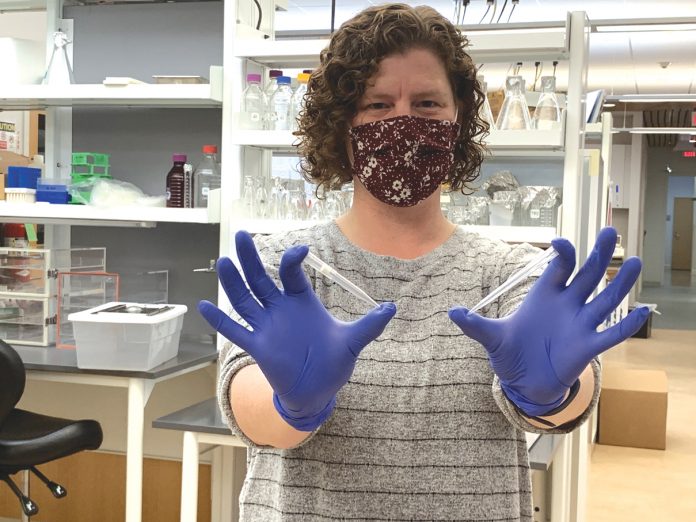
For biomedical researchers, pipette tips are a bit like No. 2 pencils are for high school students taking the ACT: cheap, voluminous and indispensable. So what do you do when suddenly none are available?
Demand for Covid-19 testing materials along with weather- and pandemic-related disruptions to manufacturing and distribution of lab equipment have forced scientists at the Oklahoma Medical Research Foundation to become resourceful — and patient.
“The difficulty in finding critical equipment is as bad as I’ve seen it in my 30 years here,” said Kiely Grundahl, a lab manager for OMRF’s Genes and Human Disease Research Program.
Disposable pipette tips are laboratory essentials. Scientists use the small, cone-shaped pieces of plastic to transfer tiny volumes of liquid in experiments. Several OMRF labs are having trouble finding the ones they need.
For cardiovascular biologist Audrey Cleuren, Ph.D., the problem is finding a particular plastic specimen tube. Her latest order is delayed by nearly three months.
“We could try to use a different type,” said Cleuren, who recently joined OMRF from the University of Michigan. “But it potentially jeopardizes the results of an experiment. I’d rather wait.”
Plastics aren’t the only essentials in short supply. In setting up her new lab, Cleuren had to borrow an older-model centrifuge from another OMRF scientist. Researchers use the high-speed rotating device to separate samples. Cleuren’s is on back-order. Expected arrival date: March 2022.
“That’s something we use daily. We have to have it,” said Cleuren, who studies the function of cells that line blood vessels. “There’s plenty to keep us busy. But there are some things that we have to wait for because there is no alternative.”
According to the Food and Drug Administration’s Device Shortage List, scarcity of testing supplies and equipment is expected to last for the “duration of the Covid-19 public health emergency.” The agency lists shortages in more than 80 categories of devices.
That scarcity has also led to price spikes. At OMRF, scientists go through roughly 9,000 disposable gloves per month, said Wendy Quinn, OMRF’s purchasing director. Since the onset of the pandemic, their cost has risen 80%.
In carefully managed grant budgets, said Cleuren, those small expenses add up. “We pay for that.”
These days, lab managers like Grundahl and Mike McDaniel spend hours hunting down supplies from alternate vendors. If that fails, they look to their OMRF neighbors.
“You send out a mass email,” said McDaniel, part of OMRF’s Cardiovascular Biology Research Program. “Like ‘Hey, does anybody have a this or a that they’re not using for the time being to tide us over?’”
McDaniel said the shortages have made scheduling the use of shared equipment critical. And to overcome the scarcities of single-use plastics, some labs are even considering returning to glass.
It takes creativity, but cooperation makes all the difference in ensuring science marches on. “This supply shortage is unprecedented,” McDaniel said. “But it’s been inspiring to see the team-first attitude among all the labs.”











